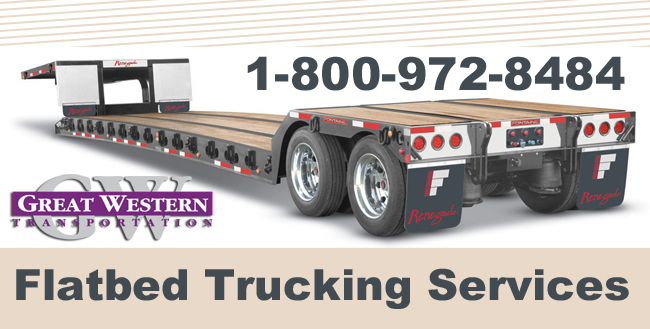The gooseneck is a figurative term in the trucking industry jargon to describe the part of a drop deck trailer that attaches to the tractor’s fifth wheel. It does, in fact, look like a gooseneck because of its shape.
You may have already encountered trailers equipped with removable goosenecks. The RGN mechanism is commonly found on a drop-deck type of trailer like lowboys and double drop decks. Not all of these trailers will have a removable gooseneck, but will have some other method of loading a shipment, such as ramps. Removable goosenecks are generally the most commonly available feature.
Equipment or freight that may be driven on, pushed, or pulled, on a drop deck type of trailer will benefit from the RGN feature, since these trailers create a ramp for Roll On and Roll Off loading.
Since some drop deck trailers cannot be loaded from the ground, it’s very helpful to have one that features the type of gooseneck that can be removed. With the gooseneck out of the way, the equipment or freight can be loaded or unloaded by driving right up onto the cargo area of the trailer from the front of the trailer.
How is the gooseneck removed?
Typically the gooseneck mechanism is left attached to the tractor and driven away while the trailer is loaded. The trailer is left unobstructed in the front so that with the use of ramps, equipment can be driven on or off the trailer.
If you’re loading a piece of construction machinery that moves under its own power, you can drive it right onto the surface of the trailer. Otherwise it will have to be pushed or towed.
Some forklifts may also be able to load larger items as if the front of the trailer were connected to a loading dock. This process is usually easier and faster than assembling and using a ramp. After the loading is complete, the gooseneck, which is still attached to the tractor, is backed up to the trailer and reconnected. The gooseneck to trailer connection mechanism varies by the manufacturer, however the function is always the same.
Since goosenecks are only found on drop deck trailers, you should only encounter goosenecks when you’re shipping a very tall load. You may have to work with a removable gooseneck if you plan to ship:
- Large construction vehicles, such as certain types of cranes.
- Oversized, namely very tall shipping containers.
- Prefabricated components of building assembly.
- Vehicles can be driven on or off.
Take note that there is a certain type gooseneck variation which folds down, to form a temporary mechanical ramp at the front of the trailer. These are simply known as folding goosenecks, and they are becoming more popular. There is one significant drawback of the folding gooseneck trailer, and that is the weight capacity limit of the “ramp.”
A folding gooseneck usually features some type of hydraulic device that assists the driver in its physical lowering or raising of the gooseneck section. On these trailers a mechanical hinge is generally used, but there are hydraulic power-assist trailer models available.
To avoid trailer damage and freight damage check the weight capacity of the ramp before driving over it. The ramps are not always designed to support the full 45,000 pounds that you could put on other trailers.
When your load will exceed 45,000 pounds, you will be forced to find a different alternative for your way of loading the shipment, or perhaps a different trailer all-together.
Great Western Transportation freight representatives know the physical limitations of the majority of the trailers available, so simply contact us and we will decide the best trailer solution for your load.






